Automated texts: How to send triggered messages via SMS

Digital Marketing Manager at ClickSend
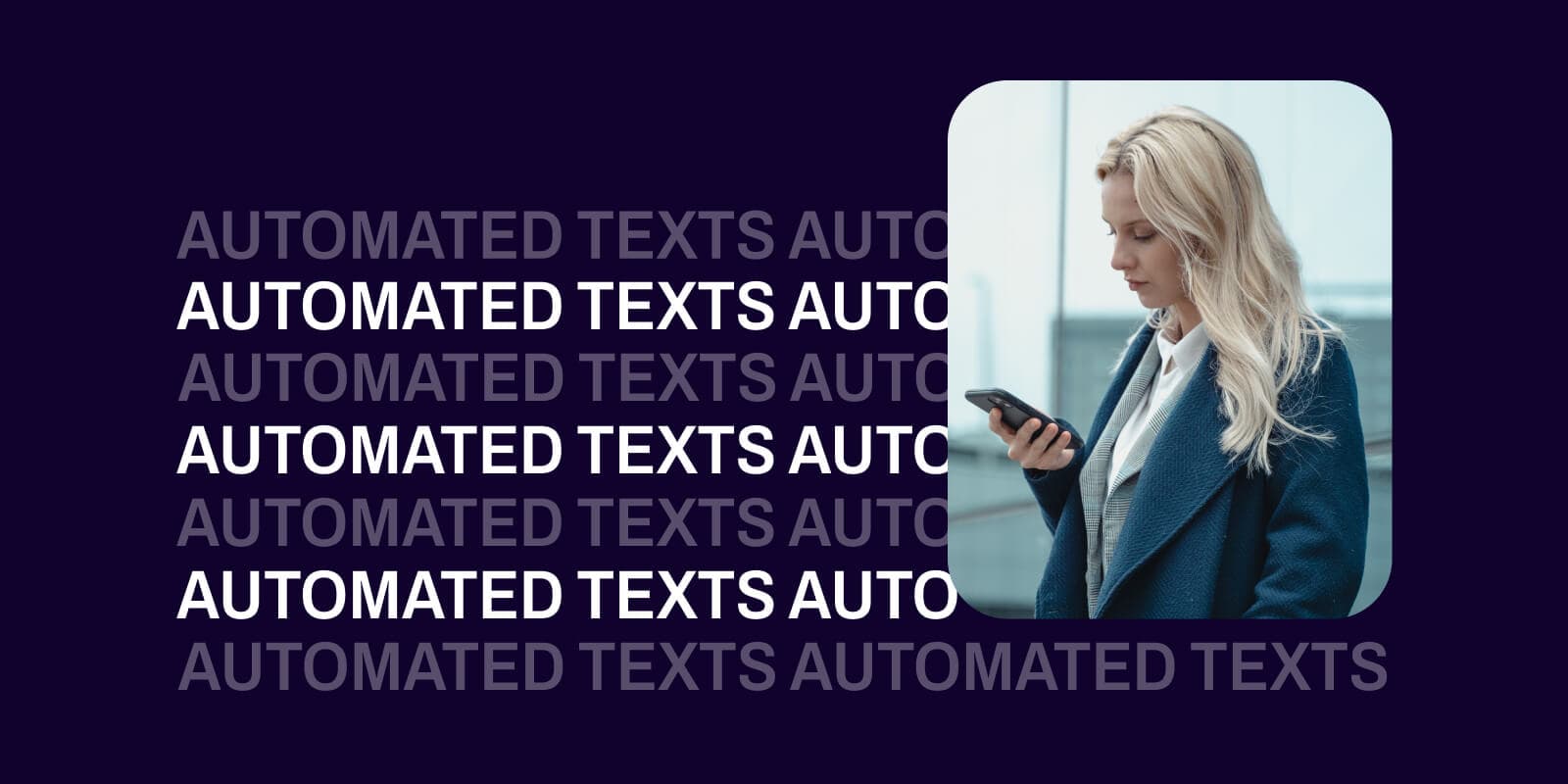
Share
Smart businesses know that most communication should be as easy as breathing. You don’t think about inhaling and exhaling, yet it powers your whole body.
When you set up triggered communications that run on autopilot, you breathe life into your business. You keep it powered up and ticking along.
SMS automation is the perfect vehicle for triggered messages. Boasting a 98% open rate, up to 45% conversion rate, and the ability to reach any of the 7.26 billion people holding phones — it’s the easiest way to get your triggered communications seen, read, and clicked. No need for subscribers to install apps.
And luckily, just like breathing, triggered texts are very easy to automate. Leaving you—the brains of the operation—free to work on the big picture.
In this post, we’ll explain:
What are triggered messages via SMS?
The power of a triggered text message strategy
Nine ways to use SMS automation
Best practices from experts in SMS
How to add triggered text to apps, tools, and websites
What are triggered text messages via SMS?
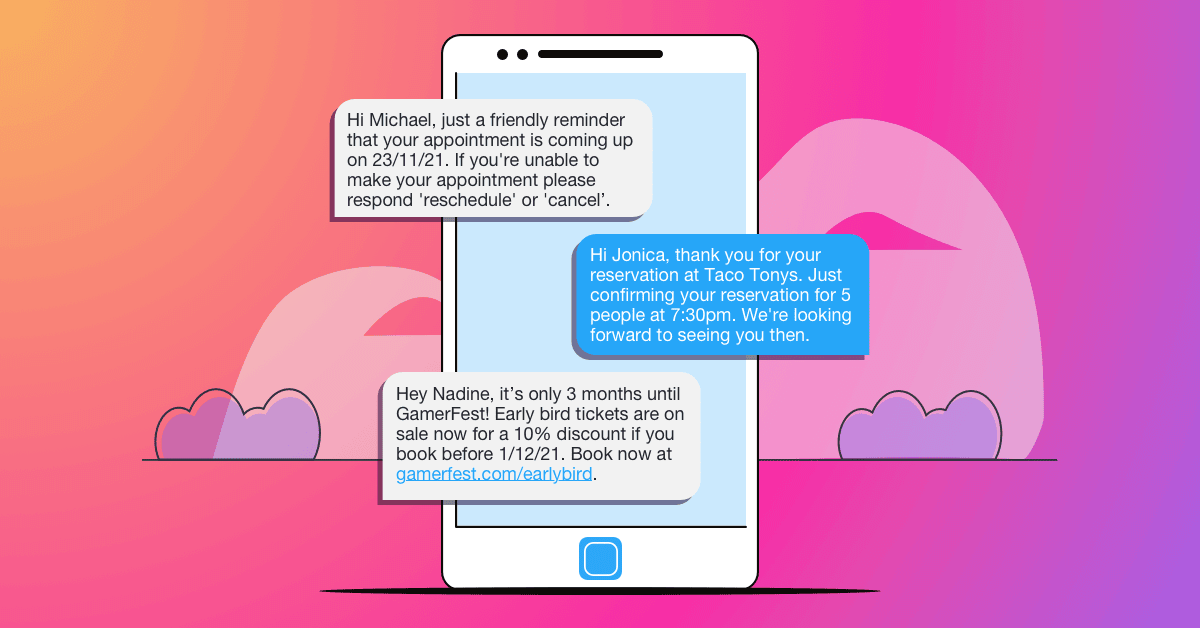
People interact with your business every day. They shop, click, buy, book, apply, inquire, and more.
All of these interactions can be triggers that set off one (or many) automatic messages to people who need information. Basically, triggered messages are a form of business texting en masse, that are triggered by the actions your subscribers take.
Here’s a very common example. You’ve most likely received order confirmations and shipping updates via SMS automation. In this case, your purchase is the trigger. Once you buy something online, a series of triggered text messages are automatically sent to your phone. These messages keep you in the loop and reduce customer service inquiries. Win-win.
However, triggered texts are much more than reminders and notifications. Using integrations and your automated text message service you can add SMS capability to any of your favorite applications and software — without writing a line of code.
That means that almost any action a customer, employee, or client takes can trigger an SMS automation.
It opens up a world of possibilities, especially when you think about the effectiveness of text as a method of communication. Hello, 20-30% SMS conversion rate, we’re looking at you.
The power of a triggered text message strategy
A triggered messaging strategy allows you to give people the information they need, right when they need it. Making your communications timely.
Once you automate this process, your messages become more relevant. Especially when your texts are triggered at key points in a customer lifecycle (rather than when you have time to write and send).
By adding personalization to each message, you can take message relevance one step further. In fact, 72% of consumers say they only engage with personalized messaging.
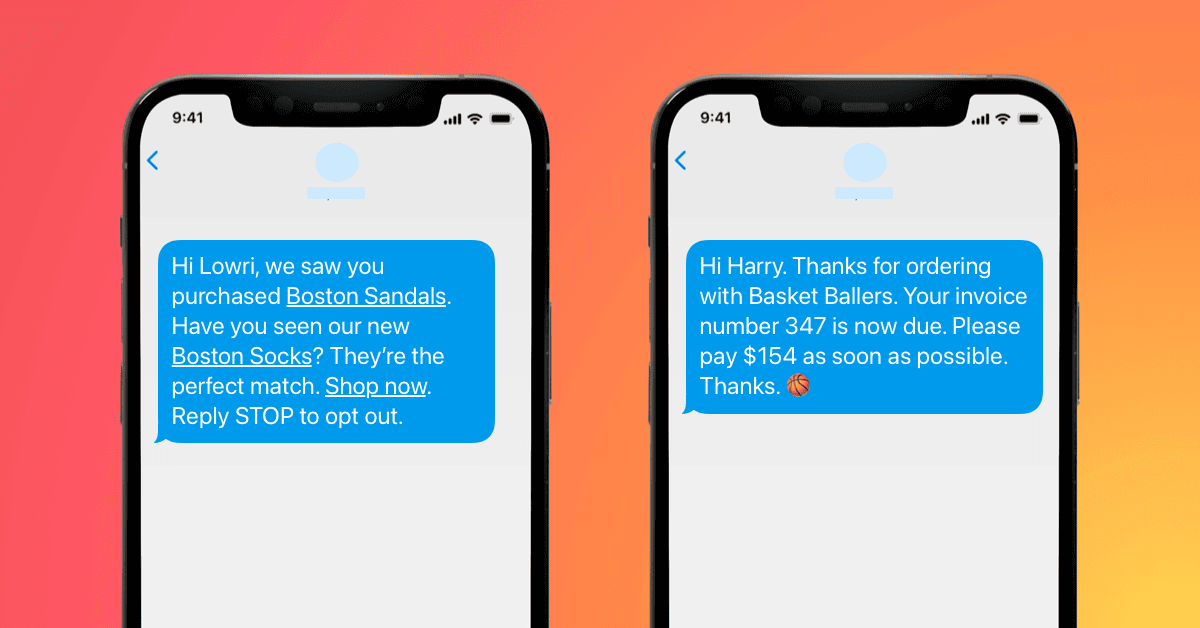
When you set up a triggered SMS strategy, you send relevant, timely, and personalized messages (that also get your audience to take action). Isn’t that the holy grail of any communications strategy?
Nine ways to use trigger SMS automation in your business
Now you know the why of triggered SMS, here are a few ideas about what triggers you can set up.
Just a heads up: how you set up your triggered messages will depend on what SMS tool you use and the integrations or API docs available. We recommend a tool that uses direct routes and has a 100% uptime guarantee, so your messages always get delivered.
1. Automated replies
Set up automatic responses to be sent whenever someone texts you a keyword or a query. Auto replies or autoresponders are sent as soon as the keyword is received. They are also fully customizable.
This is a common use case for companies who receive a large volume of messages. They set up automatic responses to answer FAQs without picking up the phone. But small businesses can also use auto responses to respond fast, for great customer experience.
Plus, there are many other ways to use automated SMS replies. You can thank customers, send offers, or confirm preferences. You can also build two-way conversations by prompting customers to reply to questions with keywords. It’s a great way to understand more about your audience.
2. Drip campaigns via SMS
Do you create automated email journeys or use drip campaigns for email marketing? You can level up your marketing automation strategy with text messages.
When someone signs up to be an SMS subscriber, keep them engaged with your brand via a drip campaign. Their sign up triggers a series of text messages sent over days or months that move them towards another action (for example, to buy or book a call).
Customer segmentation is important to creating successful drip SMS marketing campaigns. This ensures that messages are relevant and always add value.
3. Collecting customer feedback
There is no such thing as too much data, and automated text message surveys are a great way to collect ongoing feedback.
Using a triggered strategy, text surveys can be set up to send straight away, such as right after a call, which results in a higher (and faster) response rate. This allows you to identify problems sooner rather than later and increase your chances of getting a reply, while a customer’s experience is fresh in their mind.
In Diapad, you can easily set up SMS surveys and customize the message that is sent.
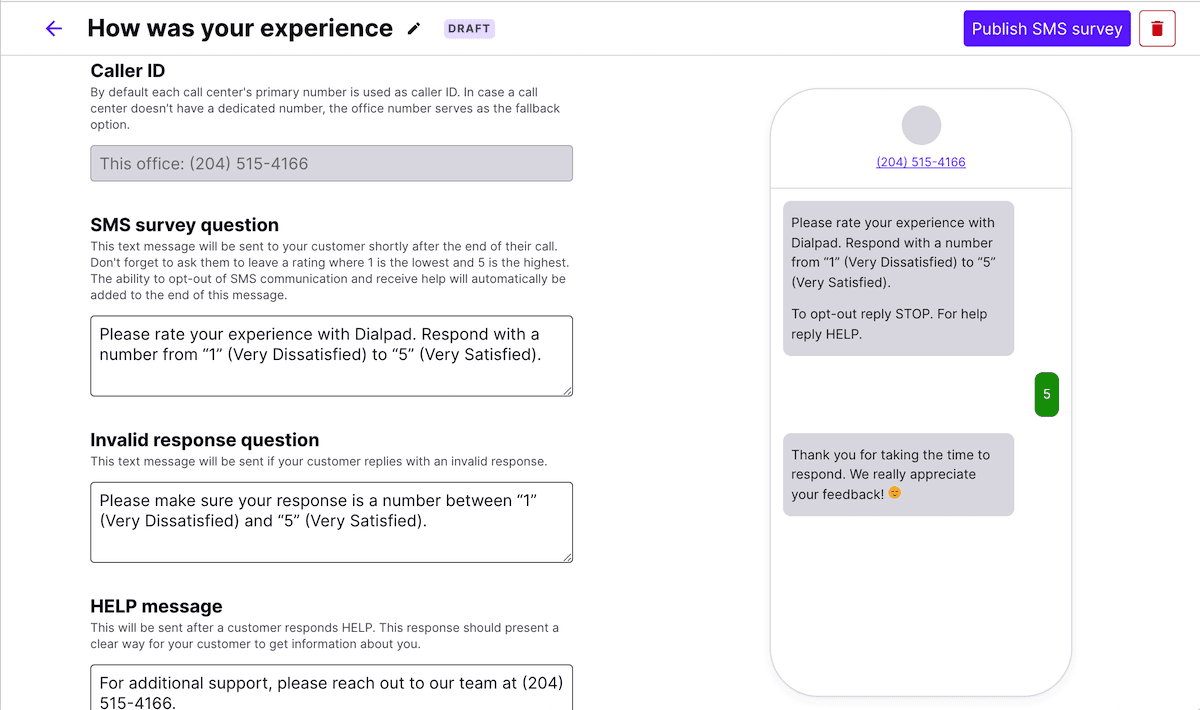
Although it’s really helpful to receive and analyze this feedback, the reality is that not everyone will respond. If your customers contact you over the phone, Dialpad’s Ai CSAT helps fill the gap so that you can receive CSAT scores for 100% of your calls.
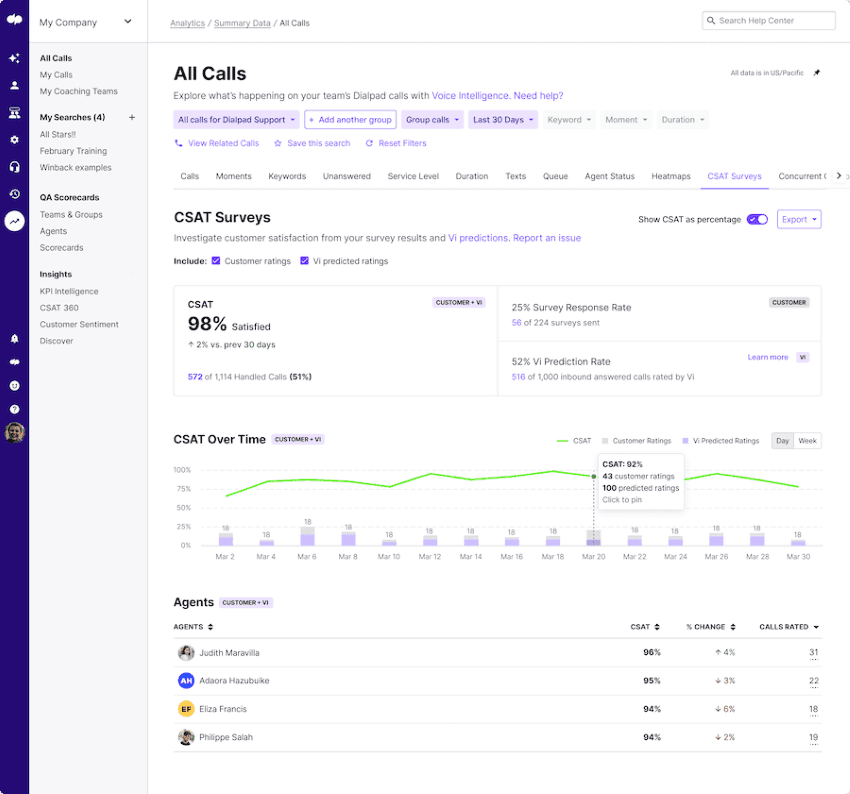
That means for customers who may not have had a positive experience, you can send automated text messages to follow up and attempt to make amends.
4. Update employees with critical business information
When you need your employees to receive important information, fast, sending a message to an internal messaging tool is one way of quickly getting your message across. But, if some employees have temporarily paused their instant message notifications to focus on deep work, they might not receive time-critical updates.
Considering that 66% of workers admit to using smartphones several times a day during work — they’re likely to see an SMS notification. This can be used, for example, when your website is down. Or, you’ve run out of stock and need to update your supplier ASAP.
Aside from employee text updates, this can also be used for customer support notifications and tracking high-value clients.
With Dialpad, you get the option to either send SMS messages to colleagues or use instant team messaging — it’s all in one app for more effective remote team communication.
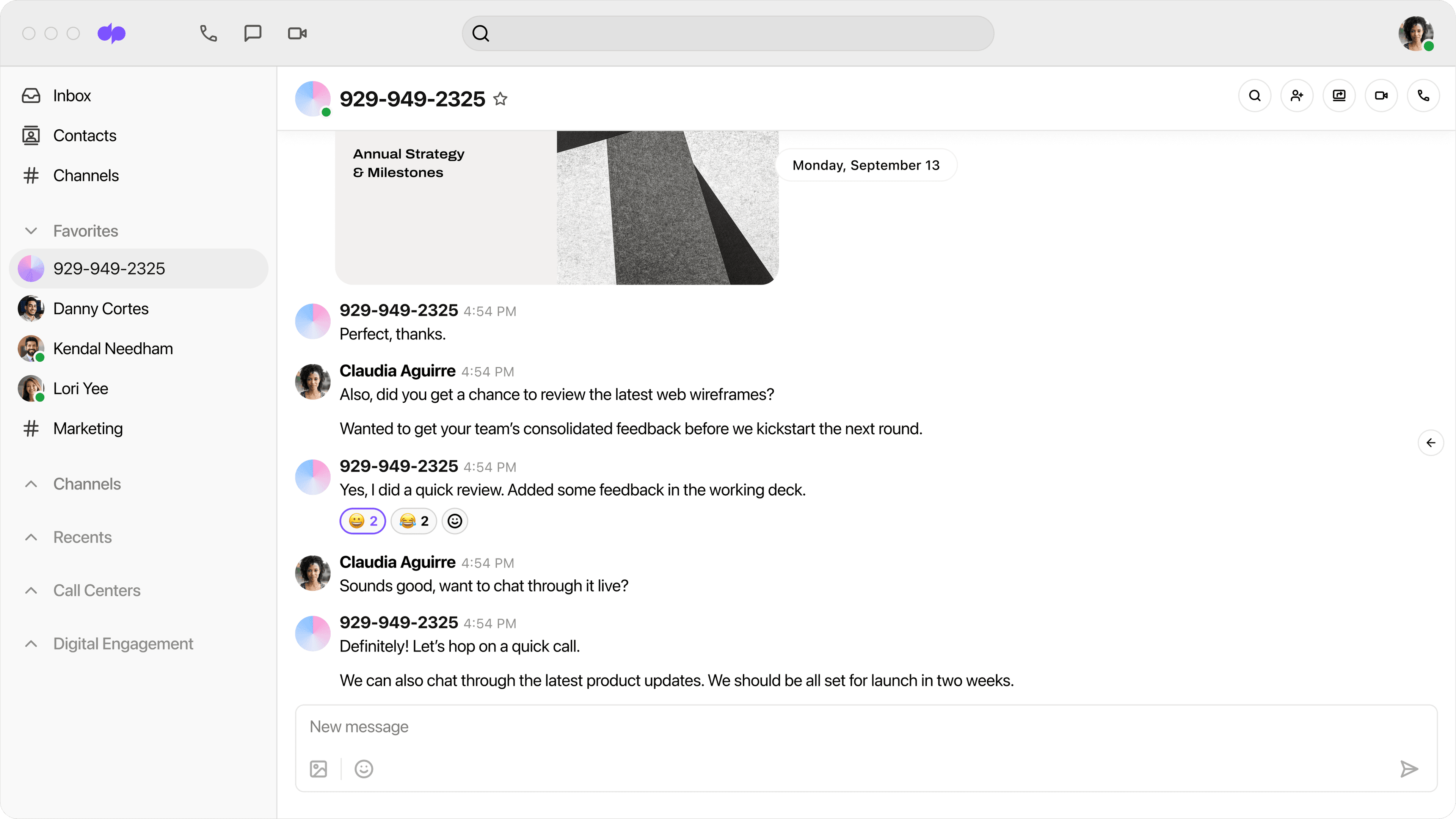
If you’re still not sold on SMS for work, we’ll just leave this illuminating statistic here. Marketers save 25 hours/week using automation. And, 46% of this time-saving comes from automating team communication.
5. Win back abandoned carts
Shopping cart abandonment is a part of doing business online. But, you can reduce the number significantly with triggered messages. In fact, 75% of customers who abandon their carts have, at that moment, every intention of completing their purchase later.
SMS is proving to be one of the best ways to nudge customers back to their cart. Many online retailers set up triggered text messages based on how long the customer is inactive after they’ve added items to their cart.
Abandoned cart follow-up texts should be friendly, personalized, and sent at the right time. If your margins allow, you can even offer a little incentive like a discount to sweeten the deal.
6. Send meeting and appointment reminders
Using SMS reminders can dramatically reduce no-shows and missed appointments. This is very popular in certain industries, such as any medical, health, or fitness businesses. With Dialpad, you can send a text to a customer with a video meeting link or allow them to see your screen share during your call. It’s a really convenient way to stay connected without having to download additional software.
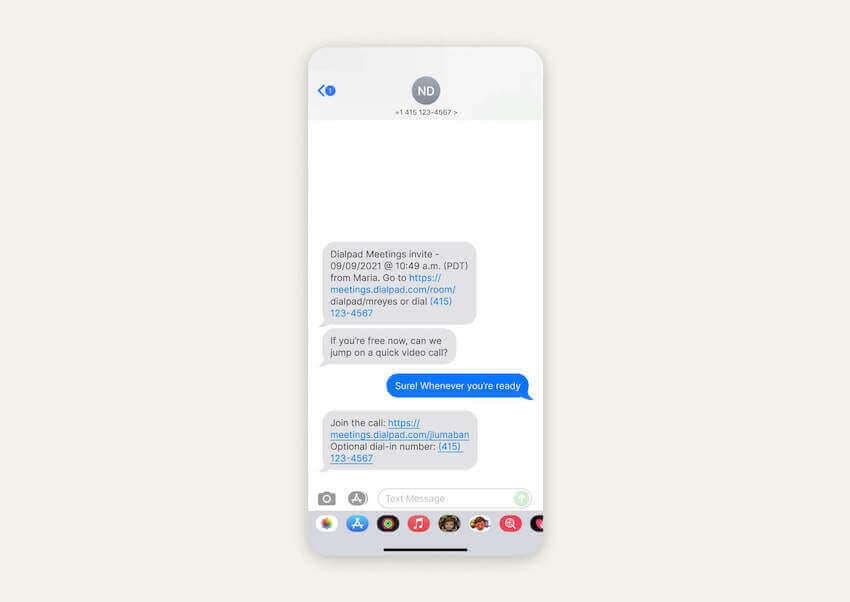
In Sydney, the State Government used SMS reminders to reduce no-shows for outpatient clinic appointments at St. Vincent’s Hospital by 19%. They then took it a step further — in regional hospitals, they included the cost of missed appointments in the message body and reduced no-shows by 34%.
These also work well for teams who work across multiple locations and need meeting reminders.
7. Connect and nurture new leads
Get more out of your sales and marketing efforts. It’s best to catch potential customers or clients when they’re most engaged. That way you have a higher chance of making them stick.
You can use triggered SMS to alert your sales team whenever a new lead signs up via a form, landing page, or ad. Considering most text messages are read within 3 minutes, your sales team will be notified quickly and able to provide flawless follow-up ASAP.
You can also use triggered SMS to set up a welcome series for new leads. Just note that this is only worthwhile if it fits with your strategy and doesn’t compete with an existing welcome email series.
8. Customer rewards
This is another way to surprise, delight, and re-engage your audience.
The premise is simple. You set up an automated text message offer to send after someone engages with your brand. It might be a discount, some credit, or a small voucher. Using the correct triggers the SMS can be sent immediately or after a period of time.
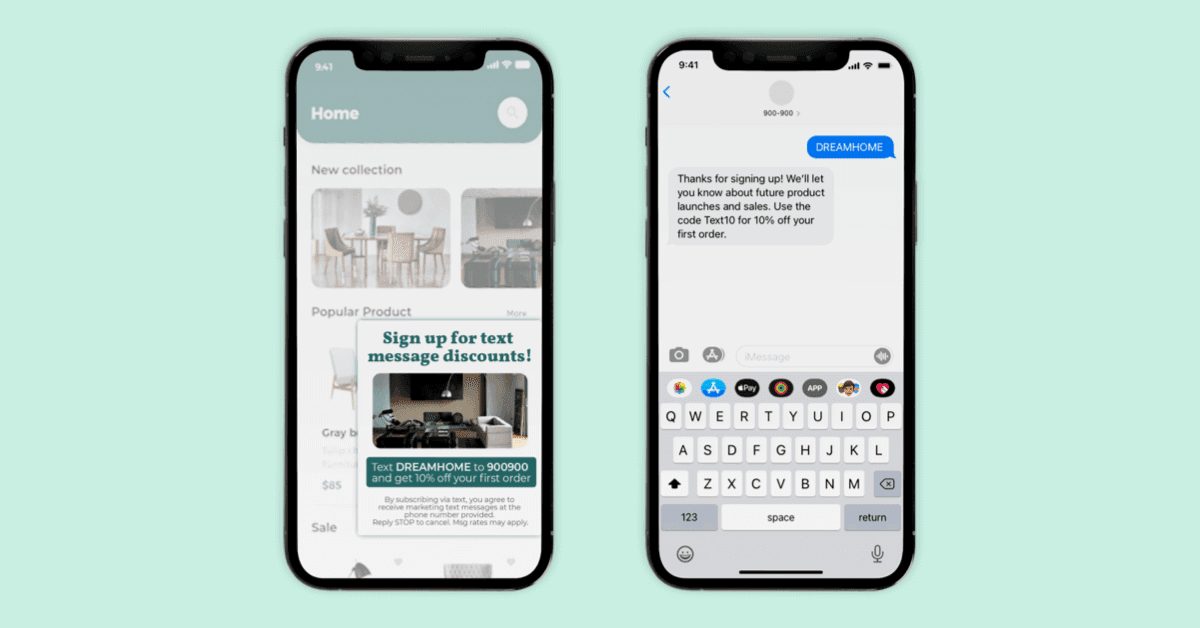
In the image above, when customers text the store’s dedicated shortcode phone number, it triggers a text which includes a 10% discount code. This simple automation encourages customers to opt-in to marketing messages, while providing value to them.
SMS works well for rewards because 85% of Americans have smartphones. Which means they can open the reward, click the link you provide, and take action straight away. Coupled with great value pricing, customer rewards sent via automatic text messages are great for ROI.
9. Birthday and event-based promotional texts
Text messaging is a powerful marketing tool that, combined with automation, can send VIP offers or promotions to your subscribers, triggered on their birthday. Or if you notice a segment of customers have seasonal buying patterns, create SMS templates for these events and automate texts right when customers are most likely to buy.
The above examples are by no means an exhaustive list, but they are good places to start.
SMS automation best practices
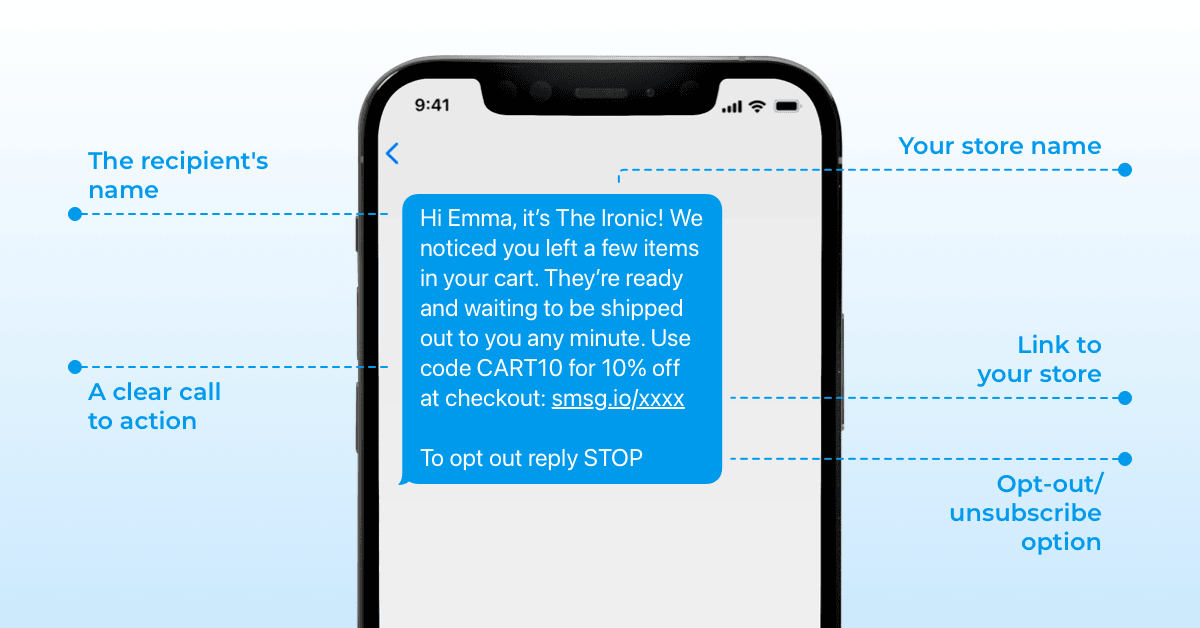
Before you set up triggered SMS, there are a few things to keep in mind.
Make sure there are no ‘trigger collisions’. This happens when a subscriber takes multiple actions that trigger contradictory or conflicting messages. For example, they receive an abandoned cart nudge when they’ve already gone back and purchased an item.
Remember that SMS needs to feel personal. Texts are usually reserved for friends and family, so don’t overload your subscribers with too many messages and remember to personalize messages by including their first name.
Make it easy to opt-in or opt-out. If you plan on sending marketing text messages, make sure people have opted-in (subscribed) when they give you their phone number. Always, give them the option to opt-out. Not only is it good manners, it’s also the law in most countries. Refer to Dialpad’s SMS Messaging Compliance guide to learn more.
Always add value. Give your audience something in return for the time they spend reading your message. It could be a peace of mind that their order is being delivered or a discount for loyalty.
Think like your audience. If you wouldn’t like to receive a message after business hours, be sure to schedule text messages when customers are most likely to be engaged.
Have a clear call to action. Your messages should have a clear call to action so that your subscribers always know what to do.
Don’t blindly follow ‘the rules’. Figure out what works for your audience instead. Evaluate your opt-outs, replies, and click-throughs to see what volume and type of messages are working.
You could even ask your SMS subscribers what kind of communication channels they prefer to get messages from. You can segment your contact list from there.
Tip: Never stop testing (even if you’re really happy with your ROI)! There could be simple improvements that make your triggered messages more effective.
Add triggered SMS to your apps, tools and websites — your way
This might come as a surprise, but it’s not hard to set up triggered messages or to add SMS capability to your favorite business tools. You don’t need to be a developer either. You just need to find the right method (and automated texting service) for your needs and skill level.
Below, we’ll share a few options to consider.
Triggered messages via a dashboard
Best for: beginners.
All online text messaging services have a dashboard. Most of these dashboards are very user-friendly. If you’ve ever used email marketing software, it will be very similar.
Depending on the service, you can usually set up basic triggered messages like auto responders right from the dashboard. It’s a good idea to sign up for a free demo before you start.
You’ll also be able to check analytics and pull reports too. Just keep in mind that functionality may be limited using this method.
Integrations, plugins, or connectors
Best for: no-coders, tinkerers, or anyone willing to learn.
Integrations connect two tools together — without any coding. Luckily, they are not difficult to master and there are plenty to choose from. But, setting up your first one might take a little time to set up or have a slight learning curve.
For example, you can connect your Google Calendar to your SMS tool and set up automatic appointment reminders whenever someone books in.
Tools such as Zapier and IFTTT are great places to start if you’re new to using integrations. Or create more complex automated workflows using Make (formerly Integromat) or Integrately.
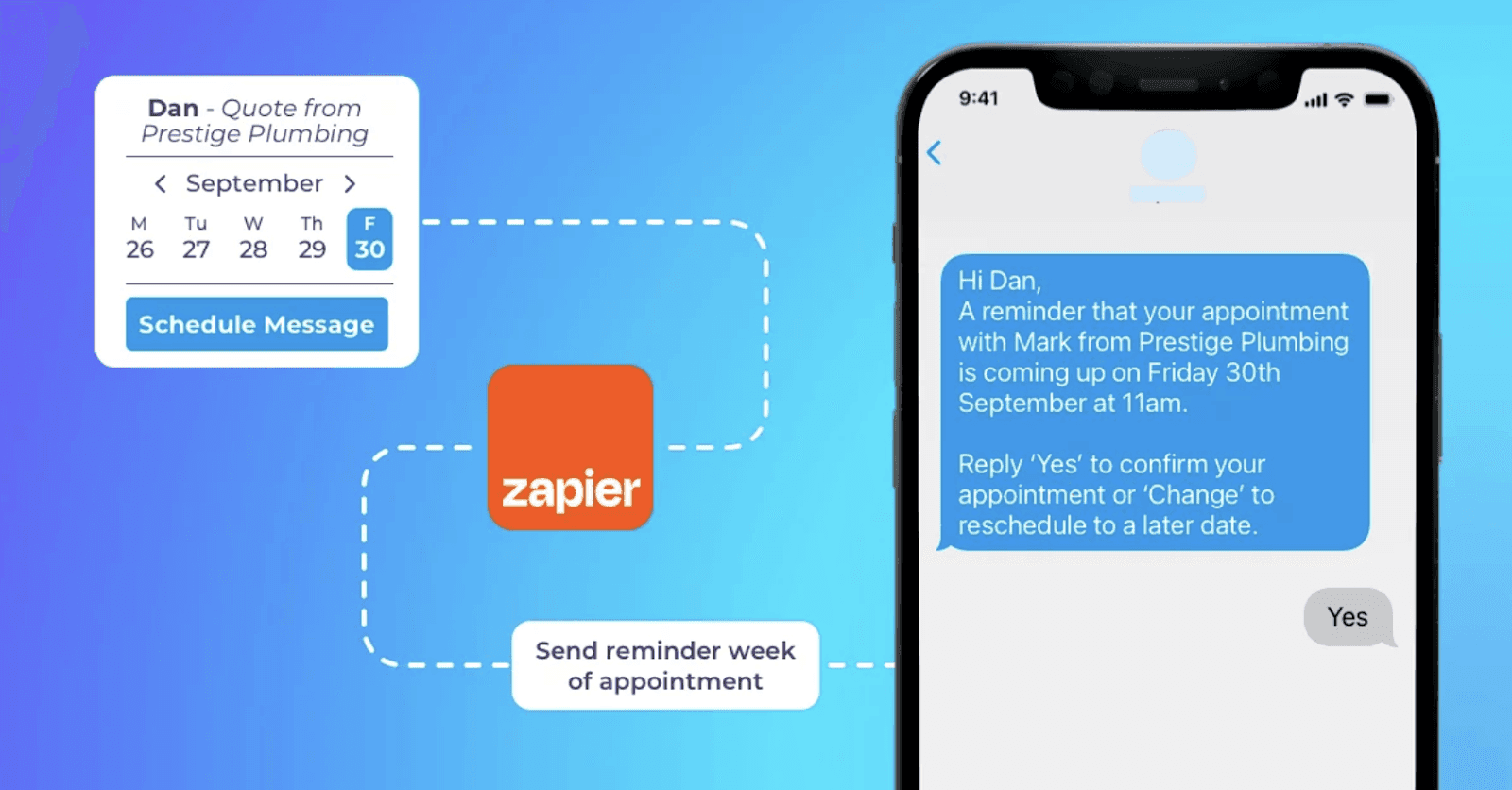
Keep in mind that you can connect your Zapier account to Dialpad to help with automating calling related tasks such as logging calls.
Be sure to choose an SMS provider with great help docs and exceptional customer service that’s available 24/7. That way you can get assistance if you get stuck.
Open API
Best for: programmers or coders.
If you want full control over your SMS functionality, this is the way to go. It’s also the perfect fit for businesses that can’t find the integration they need. Or, have a team of developers to support them.
Using an open API, you can build text message automation into your existing applications exactly how you want. You’ll just need to provide your developer with the technical docs from your preferred SMS tool.
Ready to start automating your texts?
A small time investment now will save you hours in the future. Setting up and sending automated texts is a great way to keep your customers (and employees) informed and improve their experience with your brand. Go forth and set up your first triggered text journey — and don’t forget to share your results.
Start texting your customers today!
Send text messages, make calls to customers, and much more with Dialpad. Sign up for a free 14-day trial to start texting in just minutes—or, take a self-guided interactive tour of the app first.
